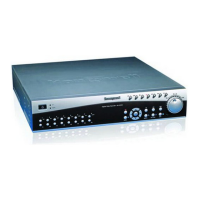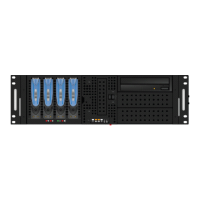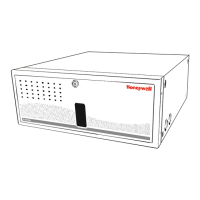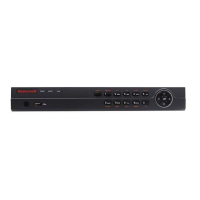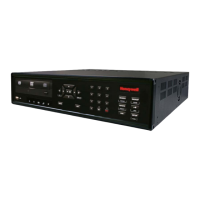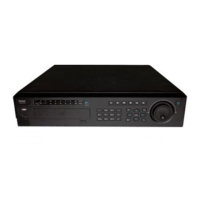
Do you have a question about the Honeywell CADVR-1004-WD-M and is the answer not in the manual?
| Video Input | 4 channels |
|---|---|
| Hard Drive Capacity | Up to 6TB |
| Audio Input | 4 channels |
| Audio Output | 1 channel |
| USB Interface | 2 USB 2.0 |
| Channels | 4 |
| Compression | H.264 |
| Video Output | 1 VGA, 1 HDMI |
| Recording Resolution | 1080p |
| Hard Drive Support | 1 SATA |
| Network Interface | 1 RJ45 10/100Mbps |
| Operating Temperature | -10°C to 55°C |
| Power Supply | 12V DC |
General introduction to the DVR series product's capabilities and design.
Enumerates the main functionalities like real-time monitoring, storage, and network operation.
Visual representation of system connections and components.
Guide for installing hard disk drives in the DVR unit.
Description of ports and connectors on the DVR rear panel.
Details on connecting external alarm devices to the DVR input.
Details on connecting external devices to the DVR alarm output.
Instructions for using the remote control and front panel buttons.
Explains how to use the mouse for DVR control and menu navigation.
Step-by-step instructions for turning on the DVR system.
Safe methods for powering down the DVR unit.
How to view multiple camera channels simultaneously.
Navigating and viewing live camera feeds in preview mode.
Configuration and control of video recording modes and settings.
How to search and play back recorded video footage.
Instructions for controlling Pan-Tilt-Zoom cameras connected to the DVR.
Managing and configuring alarm events and triggers.
Customizing video display settings like brightness and contrast.
Configuring recording parameters, schedules, and overlays.
Adjusting camera-specific settings such as video mode and privacy areas.
Configuring network parameters for remote access and connectivity.
Setting system date, time, HDD management, user, alarm, and output configurations.
Performing system upgrades, log searches, and handling exceptions.
Steps to access the DVR interface via a web browser (IE).
Configuring system-wide parameters, including language and display.
Managing server status, rebooting, and remote upgrades.



